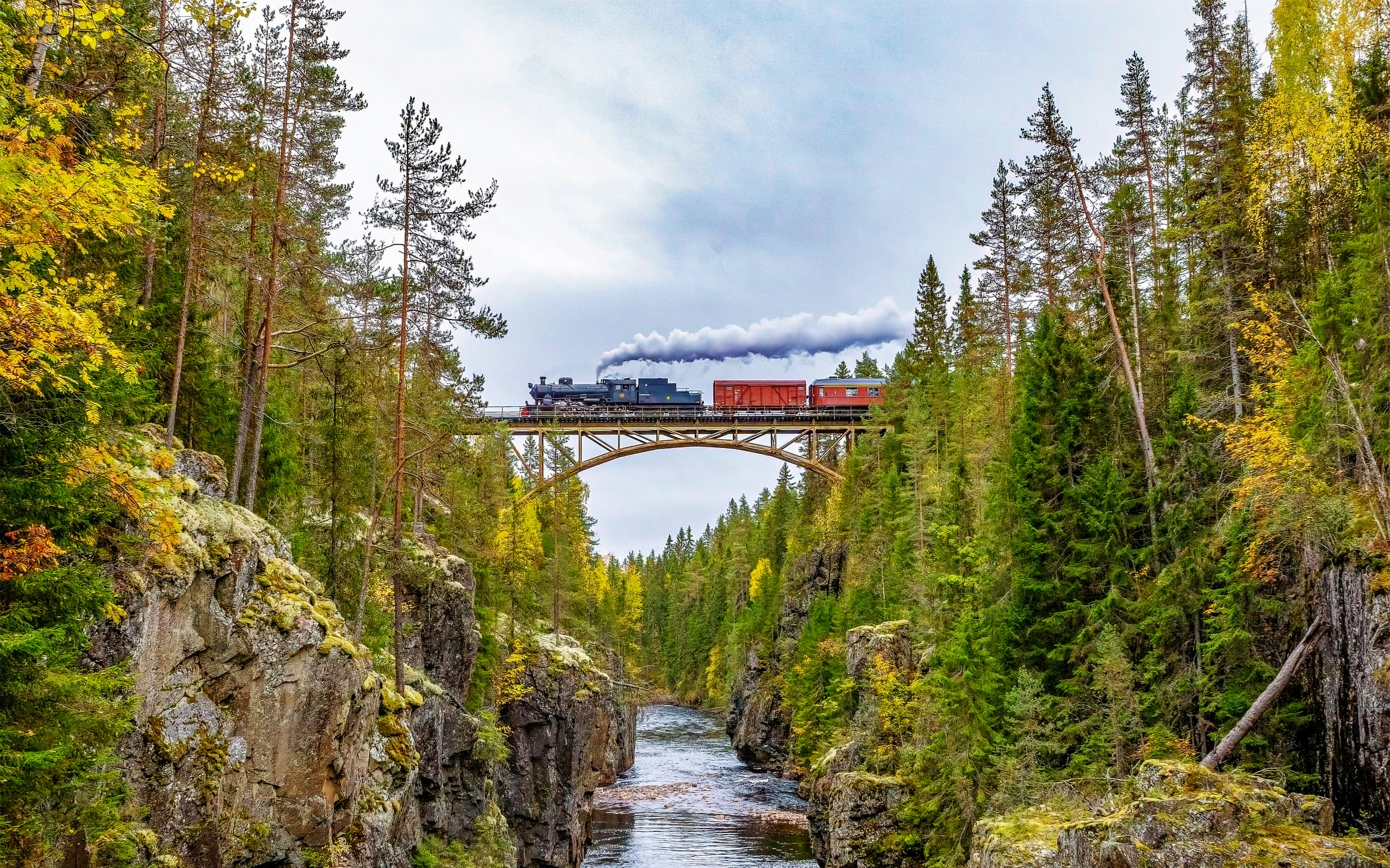
Train journeys
A train journey with our historic trains provides a peaceful and unforgettable experience through Sweden's beautiful and varied landscape.
Filter calendar
Before the journey
Booking and tickets
Ticket sales vary depending on the type of trip. See what applies to each trip. All travelers must present a valid ticket on board. Children often have a discounted price, see information for each trip.
If the trip is fully booked, you are given the opportunity to put yourself on a waiting list. Whoever is contacted must quickly give an answer if they want the place. If the person cannot be reached by phone, the place goes to the next person on the waiting list.
First class
You can choose to travel in first or second class.
Second class
You can choose to travel in first or second class.
During the journey
Staff on board
The train master has the over all responisbility on board, including saftey responsibility. The train master has a number of train attendants that will assist him or her. Please contact the staff on board for questions about heating, windows and doors before trying to regulate and/or open on your own.
Toilets
The train master is responsible on board, including safety. To help him, the train master has a number of train attendants. Feel free to contact the staff on board for questions about heating, windows and doors before trying to regulate and/or open on your own.
In case of accidents
In the case of an accident, please remain in your seat and wait for information from the staff.
Take care of the train
Keep your feet and shoes on the floor to protect our seats. Be careful with drinks so you don't spill when the train is running.
Important information
Animals are not allowed
Dogs and other animals are not allowed on our train journeys. The exception is assistance animals with a certificate.
Alcohol on board
It is not permitted to bring your own alcoholic beverages for consumption on board. You can only buy alcohol in our restaurant or bar cart.